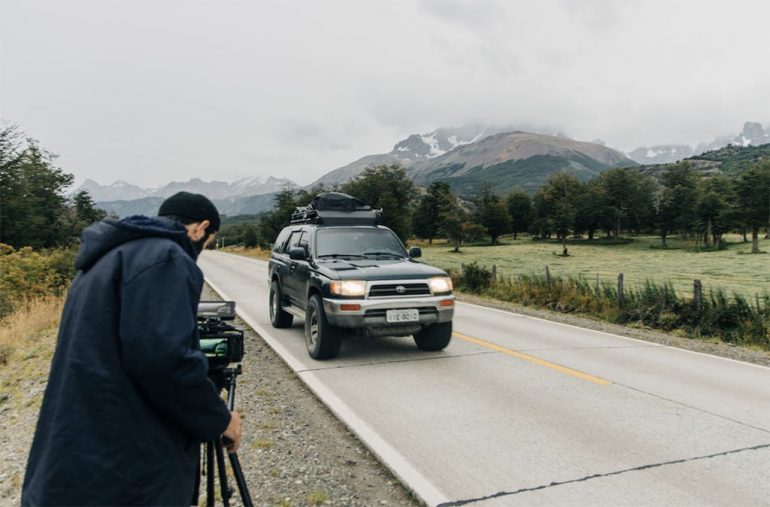
There are various reasons why you might want to take breathtaking photographs of automobiles. For instance, if you are selling a car, taking high-quality photos can greatly enhance your listing to grab the attention of potential buyers.
Alternatively, you may simply have a passion for both cars and photography. Perhaps you want to create a professional portfolio to showcase your photography skills; in which case, superb shots of stunning cars will certainly make an impression.
Another reason for taking amazing photographs of automobiles could be because you want to document restoration projects.
Whatever your motive for photographing motor cars, by learning the secrets behind taking amazing shots, you can create stunning images.
So, let us explore 12 secrets behind taking breathtaking automobile photographs.
Whether you are photographing an old MINI R56 hatchback or a brand-new Mustang GTD, before you start shooting, ensure the vehicle looks its best. This is just as important as ensuring you have the right skills and equipment to take great photos.
A pristine and polished car reflects light better and looks more attractive in photos.
Pay attention to small details like removing distracting items from windshields or polishing chrome elements until they shine brightly.
Timing is critical when capturing stunning images of cars.
Early morning or late afternoon, often referred to as ‘the golden hours,’ are prime times for photo shoots. During these times, sunlight casts long shadows and gives a warm tone to the captured images. And indirect natural lighting helps to illuminate the details of automobiles without the harshness of direct midday light.
Cars are full of reflective surfaces that might mirror unwanted elements into your frame. Being aware of this is crucial as reflections can either break or make an image. Identify potential disturbances and alter your position accordingly to avoid unnecessary reflections.
Additionally, you can use polarizing filters to manage reflections effectively.
Ambiance plays a significant role in enhancing aesthetics in car photography. So, look for backgrounds that complement your subject instead of competing with it.
Open spaces can be ideal for broad daylight shoots while structured environments like garages or tunnels can be great for more intimate and dramatic settings.
Experiment with different angles to add dynamic perspectives.
Low angles can accentuate the power and size of cars. On the other hand, high-level shots enable you to capture unique details like sunroofs or intricate roof designs.
Maintain a balanced variety in your shots by incorporating both close-up shots that highlight detailed elements and wide-angle shots that show off the car’s overall aesthetic.
You should play around with the depth-of-field settings on your camera to create different effects.
For example, a shallow depth-of-field can creatively blur certain parts of a car while keeping focus on key features. This technique is particularly good for taking close-up shots.
Applying the rule of thirds to your car photography can dramatically improve your framing. Imagine a grid on your viewfinder and then place points of interest along those lines or at their intersections. This technique provides balance to the photo and can make your automobile stand out even more.
Different lenses can drastically change how your automobile is portrayed.
For instance, a wide-angle lens allows you to capture more of the scene, while a telephoto lens lets you focus on specific details of the car from a distance, creating a nice blur in the background and foreground.
So, do not hesitate to switch lenses and experiment.
If you want to take shots of moving cars, you need to utilize camera stabilizer tools.
With often complex angles and dynamic positions involved in automotive photography to catch stunning shots of moving cars, camera stabilizing tools like tripods and gimbals, which provide stability for sharper images and enable slower shutter speeds without blur, are crucial.
The technique of bracketing comes in very handy when capturing automobiles. By taking multiple shots of the same scene at varying exposures, you will create plenty of options to choose from later.
Therefore, you are more likely to capture perfectly exposed images that emphasize your subject’s best features.
While the exteriors of cars are often the main focus, do not overlook the interiors. Think of unique ways to capture steering wheels, dashboards, upholstery patterns, and other distinctive details. And remember to let ample light in for clear shots.
Post-processing is your secret weapon for refining car photos.
By using an excellent photo editing app or platform, you can do multiple things to enhance your automobile photos, such as adjusting the exposure, color, and contrast. Image enhancement with AI allows you to enhance the resolution of your photographs like never before. And you could try adding effects, like subtle shining lights.
Once you know your reason for taking automobile photographs, you can determine which of the above tips to use.
You could utilize some or all of the suggestions, depending on your specific needs.
For instance, you will not need to take shots of a moving automobile if your purpose is to use the photos for a car listing, but if you are putting together a photography portfolio, having shots of moving cars can showcase your photography skills and your artistic eye.

Automotive Addicts Contributors are a collective of guest writers, industry professionals, and passionate enthusiasts who bring fresh perspectives to the Automotive Addicts platform. Focused on delivering timely news, in-depth reviews, and unique insights, these contributors help keep the site dynamic and engaging. Many use the platform to expand their reach and build credibility within the automotive media world, adding depth and variety to the content that drives the Automotive Addicts community.